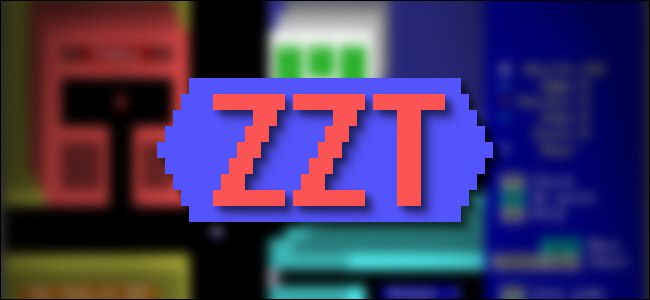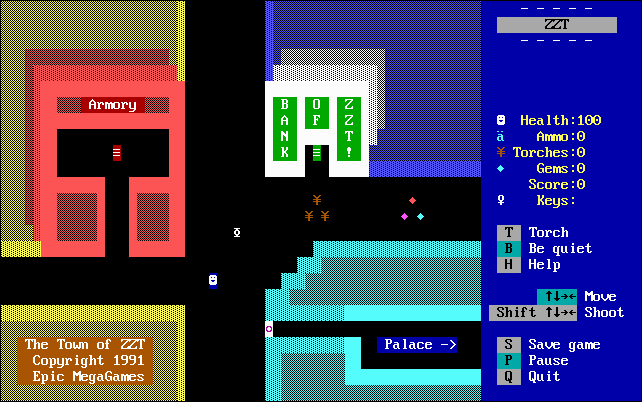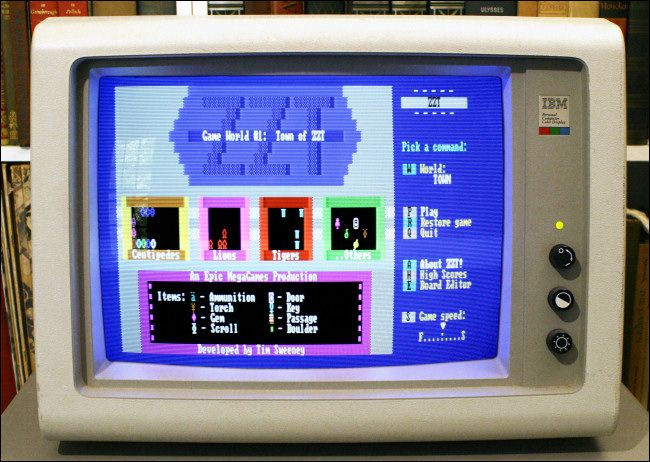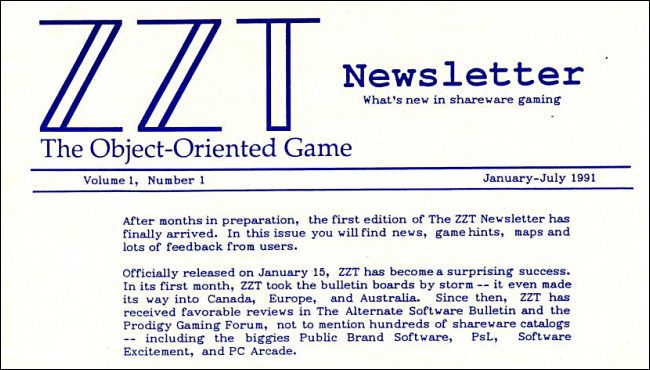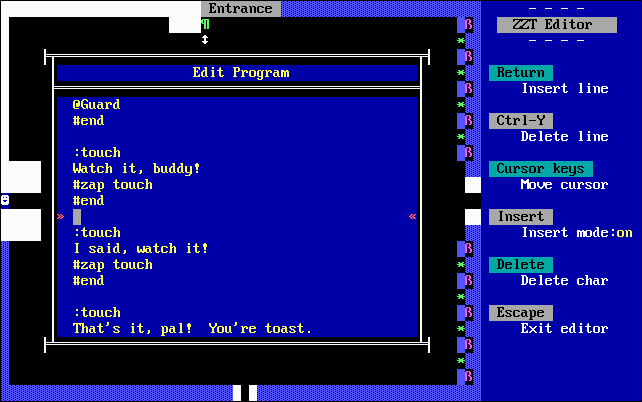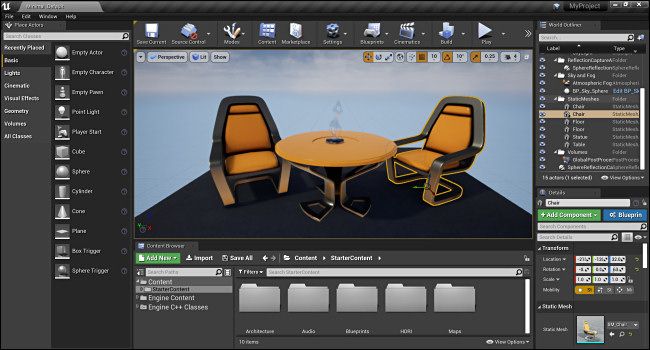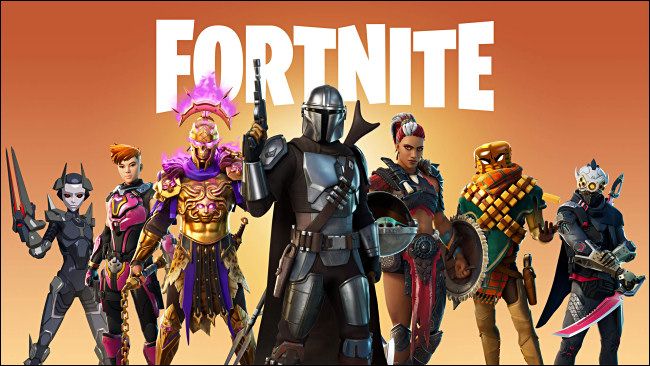Quick Links
Thirty years ago---on January 15, 1991---an American college student named Tim Sweeney released ZZT, a low-key adventure game with a revolutionary element: It shipped with a free, built-in game editor. ZZT's success spawned Epic Games, Unreal Engine, and most recently, Fortnite. Here's why ZZT was special.
What's a "ZZT," Anyway?
Tim Sweeney's passion for programming began on his Apple II when he was a kid. After getting his first IBM PC in 1989 during his freshman year of college, he dove head-first into programming the new machine. While creating an MS-DOS text editor using Turbo Pascal in 1990, he decided to make the project more fun by adding game-like elements. That evolved into ZZT, which was released as shareware in 1991.
The genius of ZZT in the early 1990s was that it wasn't just a cute ASCII-based adventure. With every copy of ZZT downloaded, players also got an in-game world editor for free. That's because ZZT's text editor roots meant that Sweeney created the game engine and editor first and then built his game worlds within it.
Like a text editor, ZZT only uses text-mode characters---a zero might represent the segment of a centipede, and a small circular degree symbol might become a bullet. Accordingly, in ZZT, you typically control a generic, smiley-faced protagonist who must navigate a world of traps, puzzles, and peril while collecting keys, torches, and gems along the way.
At the time of ZZT's initial release, Sweeney called his one-man business "Potomac Computer Systems" after his home town of Potomac, Maryland. He changed the name to "Epic MegaGames" in October 1991 to make it sound like a big, successful company. (Epic dropped the "Mega" in 1999 after the success of Unreal.)
Since it was a shareware title, players could get ZZT and one world called Town of ZZT for free---usually by downloading it through dial-up bulletin board systems or CompuServe at the time. If they liked it, players could send money to Sweeney to buy more levels to play. After people began ordering several copies of the game per day, Sweeney realized he had a bankable business on his hands.
The shareware element is key to understanding the nature of ZZT. In fact, ZZT doesn't stand for anything---it was Sweeney's clever way of always appearing at the very bottom of alphabetical file listings on dial-up BBSes back in the day. It's a marketing trick.
While ZZT only sold about 4.000-5,000 copies total, Sweeney's unassuming ASCII adventure has had a massive stealth influence on the game industry due to its innovative design---and the lessons Sweeney himself learned from ZZT's success.
ZZT: The Editor Is the Game
With ZZT's in-game editor, anyone with a copy of ZZT can create their own ZZT-like adventure games. And thanks to a built-in scripting language called ZZT-OOP, creators can even stretch the game engine in novel ways to produce games in unexpected genres, from turn-based text adventures to space shoot-'em-ups.
Back in the early 1990s when easy game creation tools were rare, ZZT's world editor empowered a new generation of upcoming game designers. Dr. Dos, who runs the Museum of ZZT website, recalls how it felt. "ZZT let me feel like an adult computer programmer. As a kid, I'd constantly be doodling stages for Mario World and Mega Man sequels that I wanted to make, and just always assumed that actually creating games was something kids couldn't do. You had to be an adult and go to college and learn how to program. ZZT let me skip all of that. As a child, being able to tell your friends 'I make video games' is incredibly powerful."
The ease at which people could jump into making a game without any thought of intensive programming (or even needing to create graphics) spawned a loyal community of ZZT game makers that continues to this day. It also opened up future careers in the game industry. A repeated winner of Sweeney's ZZT level design contest named Allan Pilgrim ended up joining Epic and developing games for the firm several years later.
ZZT's Influence Lives on in Unreal Engine
Today, one of Epic's key products is Unreal Engine, a rich game engine and real-time graphics environment. Using that engine, developers can create complex video games with relative ease. It prevents them from having to reinvent the wheel with every new game.
After shipping as a high-end commercial product for years, Epic decided to release Unreal Engine 4 for free in 2014. Although few industry pundits noticed at the time, the move echoed the release of ZZT itself 23 years earlier, putting free game creation tools into the hands of thousands of people.
The parallels between the two game engines, old and new, go far beyond zero upfront cost. In 2009, I interviewed Tim Sweeney in depth about ZZT and the history of Epic for Gamasutra. In our interview, he spoke about how the concepts of ZZT directly translated to Unreal Engine.
"There's really a huge amount of similarity between ZZT and Unreal, if you look at it," said Sweeney.
"It's a structure that we've been copying and pasting into ever-more-advanced game engines ever since," he said, referring to the ZZT model. "You have this editor, you have this game runtime, they use the same display environment, same programming language."
Over the past two decades, Unreal Engine has powered dozens of blockbuster video games, including the Gears of War series, Bioshock, Batman: Arkham Asylum, and many more. Increasingly, companies are using Unreal Engine in commercial marketing applications and as a real-time visualizing aid for big-name TV shows such as The Mandalorian.
In a way, all of that started with ZZT, a humble, text-based shareware game released in 1991. That's a massive legacy for a game that many people still haven't heard of.
Epic Is 30, Too
The 30th anniversary of ZZT's release means that Epic Games is 30 years old as well. It's rare that a company of Epic's size and success is still privately controlled---Sweeney still personally owns over 50% of the firm, and that gives Epic leeway to pursue bold actions, like its ongoing tangle with Apple over App Store fees.
How does he manage it? Surely there's pressure to sell out or go public. "We just try to adapt the company to be the right size and shape for the opportunities available to us over time," he told How-To Geek via email. "And this is an unprecedented time of opportunity."
With the company's anniversary at hand, we also asked Sweeney about his favorite Epic Games project. He picked the first Unreal Engine, a massive effort for him personally that opened up Epic to blockbuster success.
"Writing the first Unreal Engine was a 3.5-year, breadth-first tour of hundreds of unique topics in software and was incredibly enlightening," Sweeney wrote. "It's unfortunate that engine complexity now requires so much specialization that few programmers understand all facets of a modern engine, as was possible in 1998."
And of course, Epic's success story continues in 2021 with Fortnite, a battle royale FPS game that shares some amusing similarities to ZZT. Both games debuted as free-to-play games with players buying features later, and both utilize game engines that allow people to create similar games for free (in the case of Fortnite, that's Unreal Engine).
ZZT's influence lives on, and in some ways, the ZZT ethos still represents Epic's core values today---empowering creators with open and easy-to-use tools. Not taking success for granted, Sweeney still runs Epic with the heart of an underdog, even though its industry clout is now mammoth.
How to Play ZZT Today
If you'd like to jump into ZZT these days, most ZZT fans recommend using Zeta, a compact and reliable MS-DOS emulator that can run ZZT worlds on a modern Windows PC. Or if you're looking for a quick fix to see what ZZT is like, you can try it out using this neat HTML5-based emulation created by Christopher Allen that runs in most modern web browsers.
According to zzt.org, fans created more than 50 new ZZT games between 2017 and 2020, so there's still a small but dedicated ZZT community out there. You can find tons of ZZT games to play at Museum of ZZT, too. The Museum covers ZZT's history with a passion fitting for such an influential yet underrated game.
Happy birthday ZZT---and happy birthday, Epic Games!

